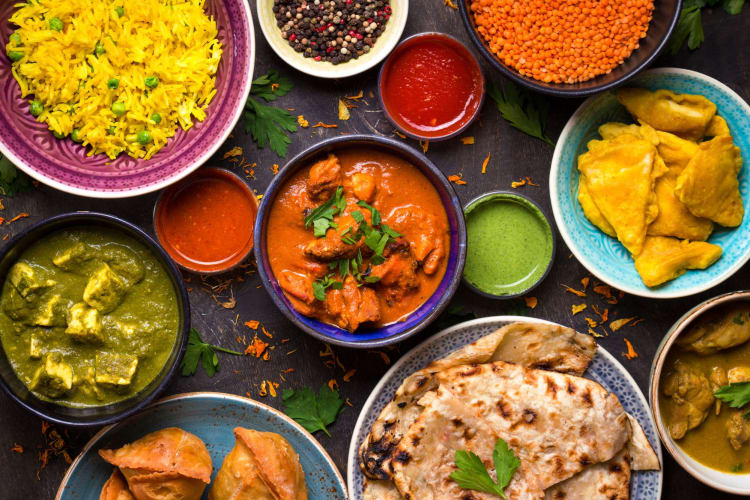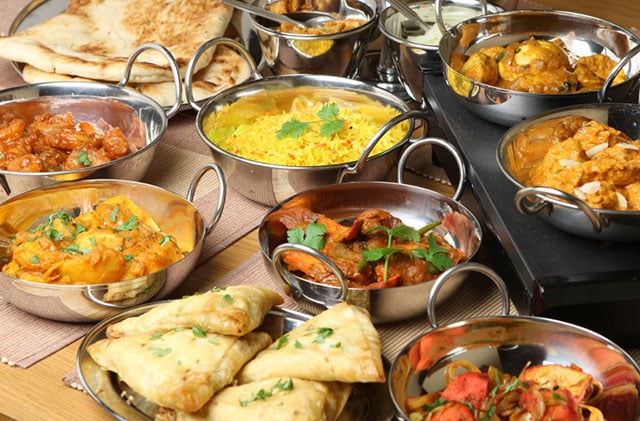Indian cuisine is known for its diversity and richness, with a wide variety of dishes and flavors that vary across different regions and communities. Here are some key aspects of Indian food:
- Diversity: Indian cuisine is incredibly diverse, with different regions and communities having their own unique dishes, ingredients, and cooking styles.
- Spices: Indian food is famous for its use of spices, which are used to add flavor, color, and aroma to dishes. Common spices used in Indian cooking include turmeric, coriander, cumin, cinnamon, and chilies.
- Vegetarianism: India has a large vegetarian population, and many traditional Indian dishes are vegetarian. In fact, many Indians follow a lacto-vegetarian diet, which includes dairy products but excludes meat, fish, and eggs.
- Regional cuisine: India has many different regional cuisines, each with its own unique flavors and dishes. Some popular regional cuisines include:
- North Indian cuisine: Known for its rich, thick sauces and creamy kormas.
- South Indian cuisine: Known for its use of coconut, tamarind, and chilies.
- East Indian cuisine: Known for its use of mustard oil and fish.
- West Indian cuisine: Known for its use of coconut, peanuts, and cashews.

- Popular dishes: Some popular Indian dishes include:
- Tandoori chicken: A classic North Indian dish made by marinating chicken in yogurt and spices and cooking it in a tandoor (clay oven).
- Biryani: A flavorful rice dish made with aromatic spices, basmati rice, and marinated meat or vegetables.
- Curry: A popular dish made with a sauce made from spices, herbs, and sometimes yogurt or cream, served with meat, vegetables, or rice.
- Naan bread: A type of leavened flatbread popular in North India.
- Dosa: A fermented rice and lentil crepe popular in South India.
- Street food: India has a vibrant street food culture, with many popular dishes like vada pav (fried doughnut sandwich), pani puri (spicy street food snack), and kebabs.
- Desserts: Indian desserts are known for their richness and sweetness, with popular dishes like gulab jamun (deep-fried dumplings in a sweet syrup), jalebi (crispy fried batter in a sweet syrup), and barfi (dense, sweet confectionery).
- Beverages: India has a variety of popular beverages like chai (spiced tea), lassi (yogurt-based drink), and jal jeera (spiced cumin drink).
- Cooking techniques: Indian cooking techniques include:
- Tadka: A technique of adding spices and herbs to hot oil to release their flavors and aromas.
- Dum: A technique of cooking food in a sealed container with steam to retain flavors and moisture.
- Handi: A technique of cooking food in a clay pot over low heat to retain flavors and moisture.
- Influence: Indian cuisine has been influenced by various cultures and traditions, including the Mughal Empire, the British Raj, and the Middle East.

Some popular Indian ingredients are:
- Basmati rice
- Naan bread
- Tandoori chicken
- Biryani
- Curry
- Chana masala (chickpea curry)
- Saag paneer (spinach and cheese curry)
- Mattar paneer (peas and cheese curry)
- Baingan bharta (roasted eggplant mash)
- Raita (yogurt and cucumber side dish)
Overall, Indian cuisine is a rich and diverse reflection of the country’s cultural heritage, with a wide variety of dishes and flavors that continue to evolve and adapt to changing times.













